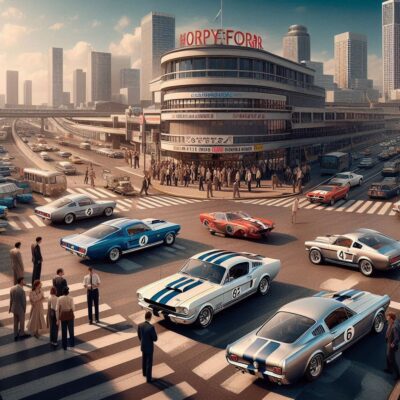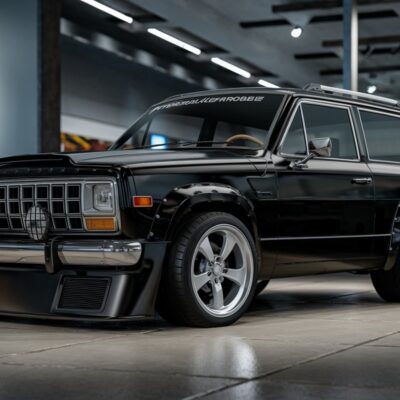The Citroën 2CV, an emblem of French automotive ingenuity, stands as a testament to the power of innovative design and cultural resonance. This comprehensive examination delves into the multifaceted history, technical specifications, and enduring legacy of the “Deux Chevaux,” exploring its impact on automotive design, popular culture, and the collector’s market.

I. Historical Context and Development
A. Pre-War Conception
- Pierre Boulanger’s visionary project (1936)
- Initial design briefs and prototypes
- Impact of World War II on development
B. Post-War Launch and Reception
- Paris Motor Show debut (1948)
- Initial public and critical response
- Early production challenges and solutions
The Citroën 2CV’s impact on post-war French rural mobility was significant, providing affordable transportation to a nation rebuilding itself.
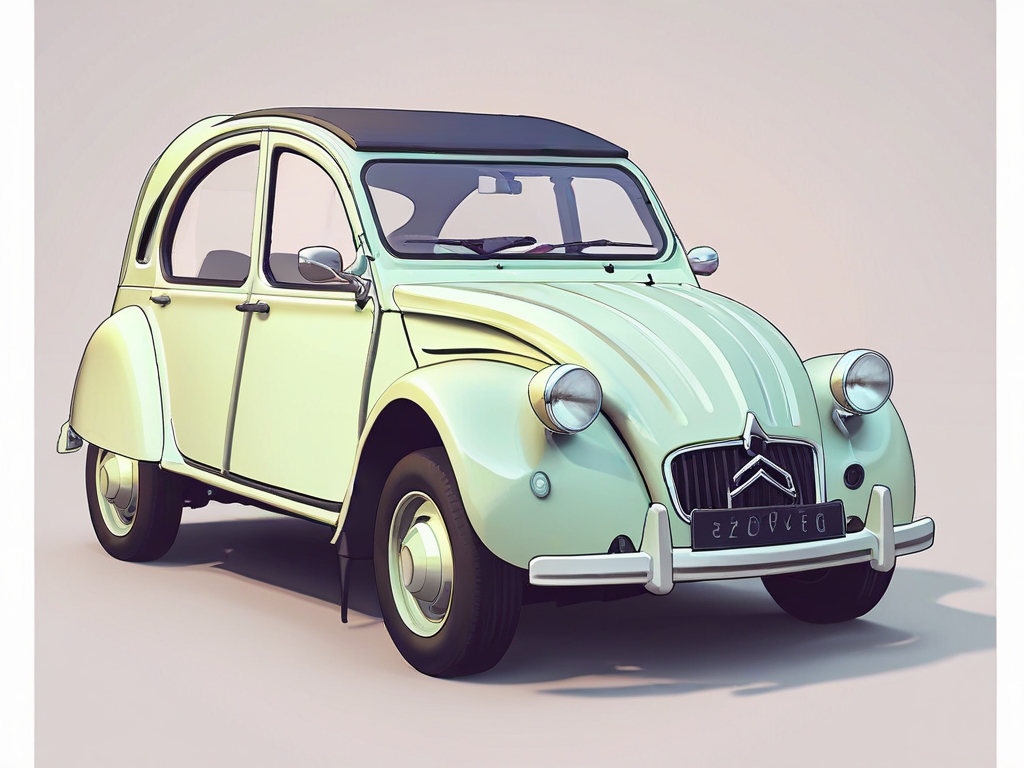
II. Engineering and Design Philosophy
A. Technical Innovations
- Air-cooled, flat-twin engine
- Evolution of engine capacity and power output
- Efficiency and reliability considerations
- Front-wheel drive configuration
- Impact on handling and interior space
- Innovative suspension system
- Design principles and functionality
- Comparison with contemporary suspension systems
B. Body Design and Aerodynamics
- Minimalist approach to bodywork
- Functionality-driven aesthetics
- Aerodynamic considerations in an era of form-over-function
C. Interior Design and Ergonomics
- Maximizing interior space efficiency
- Innovative seating solutions
- Dashboard and control layout evolution
D. Engine Evolution
| Year | Engine Model | Displacement | Power Output | Fuel System |
|---|---|---|---|---|
| 1948 | A2CV | 375 cc | 9 hp | Single-barrel carburetor |
| 1954 | 425 cc | 425 cc | 12 hp | Single-barrel carburetor |
| 1970 | 435 cc | 435 cc | 24 hp | Twin-barrel carburetor |
| 1970 | 602 cc | 602 cc | 28 hp | Twin-barrel carburetor |
| 1990 | 602 cc (final) | 602 cc | 29 hp | Twin-barrel carburetor |
This table showcases the evolution of Citroën 2CV engine specifications, a topic of great interest to automotive enthusiasts and historians alike.

III. Production and Manufacturing
A. Global Production Centers
- French production facilities
- International assembly plants
- Production volumes and milestones
B. Manufacturing Techniques
- Innovations in assembly line processes
- Material choices and their impact on production
- Quality control measures
C. Supply Chain and Economic Impact
- Parts sourcing strategies
- Economic impact on local communities
- Role in post-war French industrial recovery
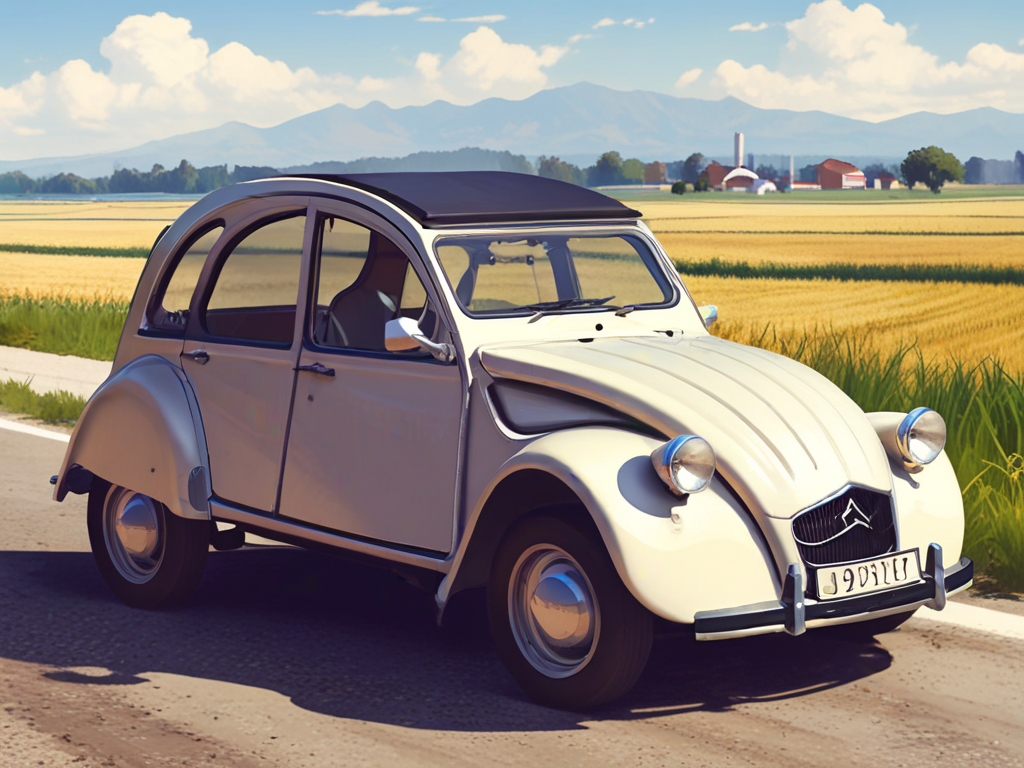
IV. Model Evolution and Variants
A. Chronological Development
- Early models (1948-1960)
- Key characteristics and improvements
- Mid-production refinements (1960-1975)
- Technical updates and design changes
- Late-model iterations (1975-1990)
- Final enhancements and special editions
B. Notable Variants
- 2CV Fourgonnette (van version)
- 2CV Sahara 4×4
- Special editions (e.g., Charleston, Spot, Dolly)
C. Related Models
- Ami 6 and Ami 8
- Dyane
- Méhari
When comparing Citroën 2CV variants, the Sahara vs. Charleston models offer an interesting study in functionality versus style.
D. Production Figures by Decade
| Decade | Units Produced | Notable Models/Variants |
|---|---|---|
| 1940s | 6,196 | Initial A-Series |
| 1950s | 704,891 | AZ, AZL, AZU (van) |
| 1960s | 1,884,328 | AZAM, Sahara 4×4 |
| 1970s | 2,385,576 | 2CV6, Special, Club |
| 1980s | 1,086,743 | Charleston, Dolly, Spot |
| 1990 | 42,365 | Final production run |
These Citroën 2CV production statistics by decade provide valuable insights into the car’s popularity and evolution over time.

V. Cultural Impact and Legacy
A. Role in Post-War Motorization
- Accessibility and affordability
- Impact on rural mobility in France and Europe
B. Pop Culture Presence
- Appearances in film and television
- Representations in literature and art
- Advertising campaigns and brand identity
The Citroën 2CV in popular culture and media appearances has cemented its status as an icon beyond the automotive world.
C. Influence on Automotive Design
- Minimalism in car design
- Approach to functional innovation
- Inspiration for modern city cars
The Citroën 2CV’s influence on modern minimalist car design is still evident in many contemporary vehicles.
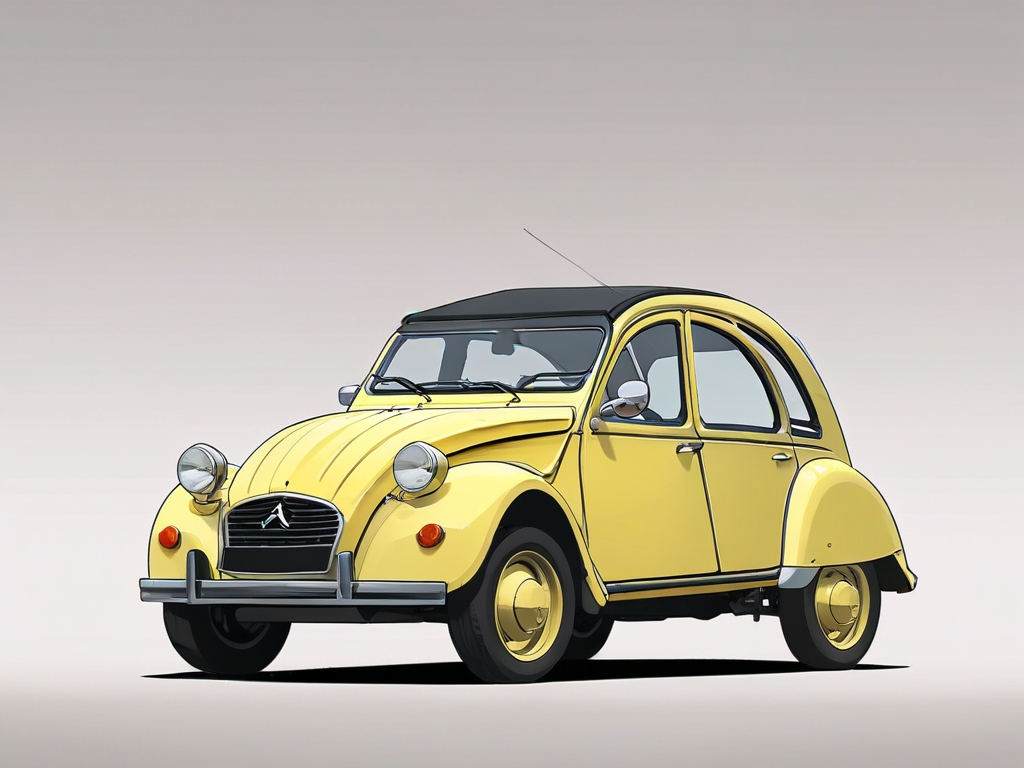
VI. Collecting and Restoration
A. Market Trends and Valuation
- Historical price trends
- Factors affecting valuation
- Regional variations in collector interest
B. Restoration Challenges and Techniques
- Sourcing original parts
- Addressing common degradation issues
- Balancing authenticity with usability
Restoring a vintage Citroën 2CV: step-by-step guide would be an invaluable resource for enthusiasts undertaking this challenging but rewarding process.
C. Preservation Efforts
- Role of enthusiast clubs and organizations
- Museum exhibitions and heritage collections
- Citroën’s official heritage program
D. Value Trends for Specific 2CV Models
| Model/Year | Condition | Avg. Value 2010 | Avg. Value 2023 | % Increase |
|---|---|---|---|---|
| 1950 2CV A | Excellent | €15,000 | €35,000 | 133% |
| 1965 2CV AZL | Good | €8,000 | €18,000 | 125% |
| 1975 2CV6 | Fair | €5,000 | €12,000 | 140% |
| 1985 Charleston | Excellent | €12,000 | €25,000 | 108% |
| 1990 2CV (Last Year) | Mint | €20,000 | €45,000 | 125% |
This Citroën 2CV value appreciation guide provides crucial information for collectors and investors in classic cars.

VII. Technical Specifications and Performance
A. Engine Specifications
- Detailed breakdown of engine variants
- Power output and torque figures
- Fuel efficiency data
B. Chassis and Suspension
- Frame design and materials
- Suspension component analysis
- Handling characteristics and road behavior
The Citroën 2CV suspension system explained: A unique design that provided exceptional comfort and handling for its time.
C. Performance Metrics
- Acceleration and top speed figures
- Braking performance
- Fuel consumption data
D. Comparative Performance Metrics
| Metric | 1950 2CV | 1970 2CV | 1990 2CV | Contemporary Economy Car (1990) |
|---|---|---|---|---|
| 0-100 km/h | 60 sec | 33 sec | 29 sec | 15 sec |
| Top Speed | 65 km/h | 95 km/h | 115 km/h | 160 km/h |
| Fuel Consumption | 5 L/100km | 6 L/100km | 6.5 L/100km | 7 L/100km |
| Weight | 560 kg | 600 kg | 650 kg | 850 kg |
This table illustrates the Citroën 2CV performance evolution compared to modern cars, showcasing its improvements over time and contextualizing its capabilities.
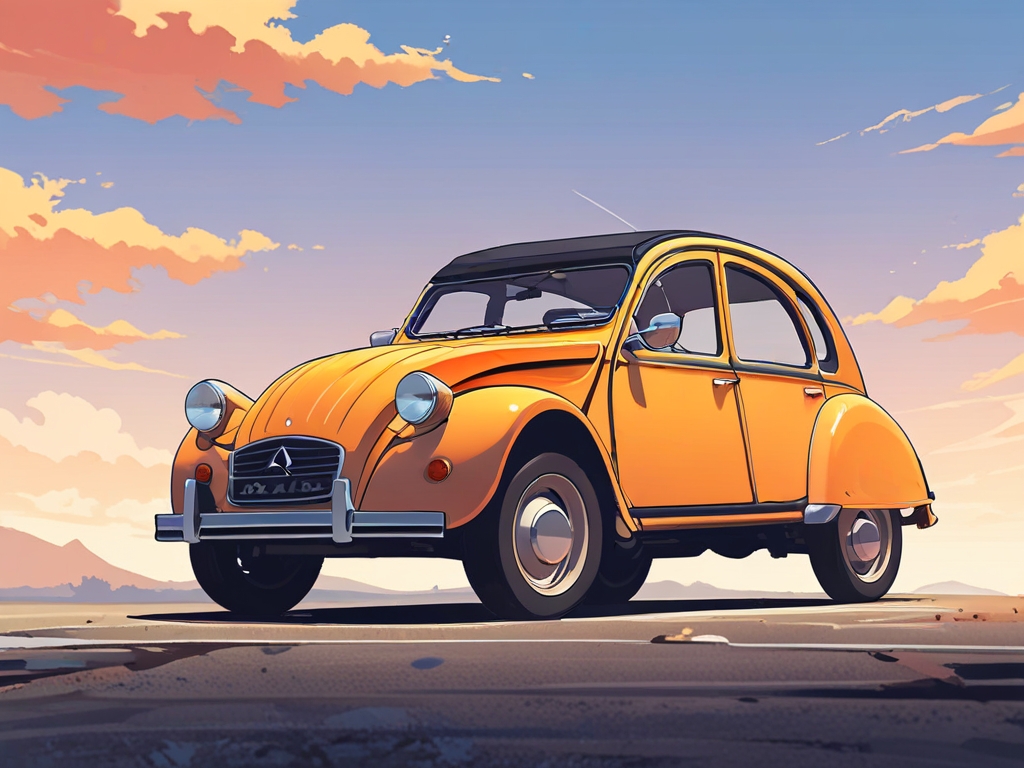
VIII. Environmental and Safety Considerations
A. Emissions and Efficiency
- Comparative analysis with contemporary vehicles
- Evolution of emissions standards compliance
B. Safety Features and Crash Performance
- Passive safety design elements
- Active safety considerations
- Evolution of safety features over production run
An environmental impact analysis of classic Citroën 2CV ownership provides interesting insights into the ecological footprint of vintage car enthusiasm.
IX. The 2CV in Motorsport
A. Rally Participation
- Notable rally appearances and performances
- Modifications for competitive use
B. Endurance Racing
- Long-distance event participations
- Impact on durability improvements
X. Global Reach and International Markets
A. Export Strategies and Success
- Key international markets
- Adaptation for different market requirements
B. Impact on Local Automotive Industries
- Influence on local car designs
- Competition with domestic manufacturers
XI. End of Production and Beyond
A. Factors Leading to Discontinuation
- Changing market demands
- Regulatory challenges
B. Legacy Models and Spiritual Successors
- Citroën models influenced by 2CV design philosophy
- Modern interpretations and concept vehicles
XII. The 2CV in the Digital Age
A. Online Communities and Resources
- Forums and social media groups
- Digital archives and documentation
B. Modern Technology Integration
- Retrofitting with contemporary amenities
- Use of technology in restoration processes
Citroën 2CV maintenance tips for long-term preservation have become increasingly important as these cars age, with online communities playing a crucial role in sharing knowledge.

The Citroën 2CV’s journey from a simple post-war economy car to a beloved cultural icon exemplifies the profound impact thoughtful engineering and design can have. Its legacy extends far beyond its 42-year production run, continuing to influence automotive design, foster passionate communities, and captivate enthusiasts worldwide.
As we reflect on the 2CV’s rich history, we’re reminded of the enduring power of innovation, simplicity, and character in the automotive world. The 2CV remains a subject of fascination for automotive enthusiasts, historians, and collectors alike. Its unique design, cultural significance, and enduring charm ensure its place not just in automotive history, but in the heart of global popular culture.
The passion for the 2CV extends to collecting rare Citroën 2CV promotional materials and literature, further enriching the community’s understanding and appreciation of this iconic vehicle. As we continue to study and appreciate the 2CV, we gain valuable insights into automotive engineering, cultural trends, and the enduring appeal of iconic design.
Frequently Asked Questions about the Citroën 2CV
"2CV" stands for "deux chevaux-vapeur," which means "two steam horses" in French. This referred to its tax horsepower rating, not its actual engine power.
The Citroën 2CV was in production for 42 years, from 1948 to 1990. The last 2CV rolled off the production line in Portugal on July 27, 1990.
The 2CV features an interconnected front and rear suspension system using horizontal coil springs. This design allows for excellent ride comfort and handling, even on rough roads.
Yes, the 2CV can be a good investment for collectors. Prices have been steadily increasing, especially for well-maintained or restored early models and special editions. However, as with any classic car, it's important to buy based on passion rather than solely for investment purposes.
When considering a 2CV, watch out for:
- Rust, especially in the chassis and floor pans
- Worn suspension components
- Engine issues due to neglect or poor maintenance
- Electrical problems in older models
- Non-original parts that may affect the car's value

